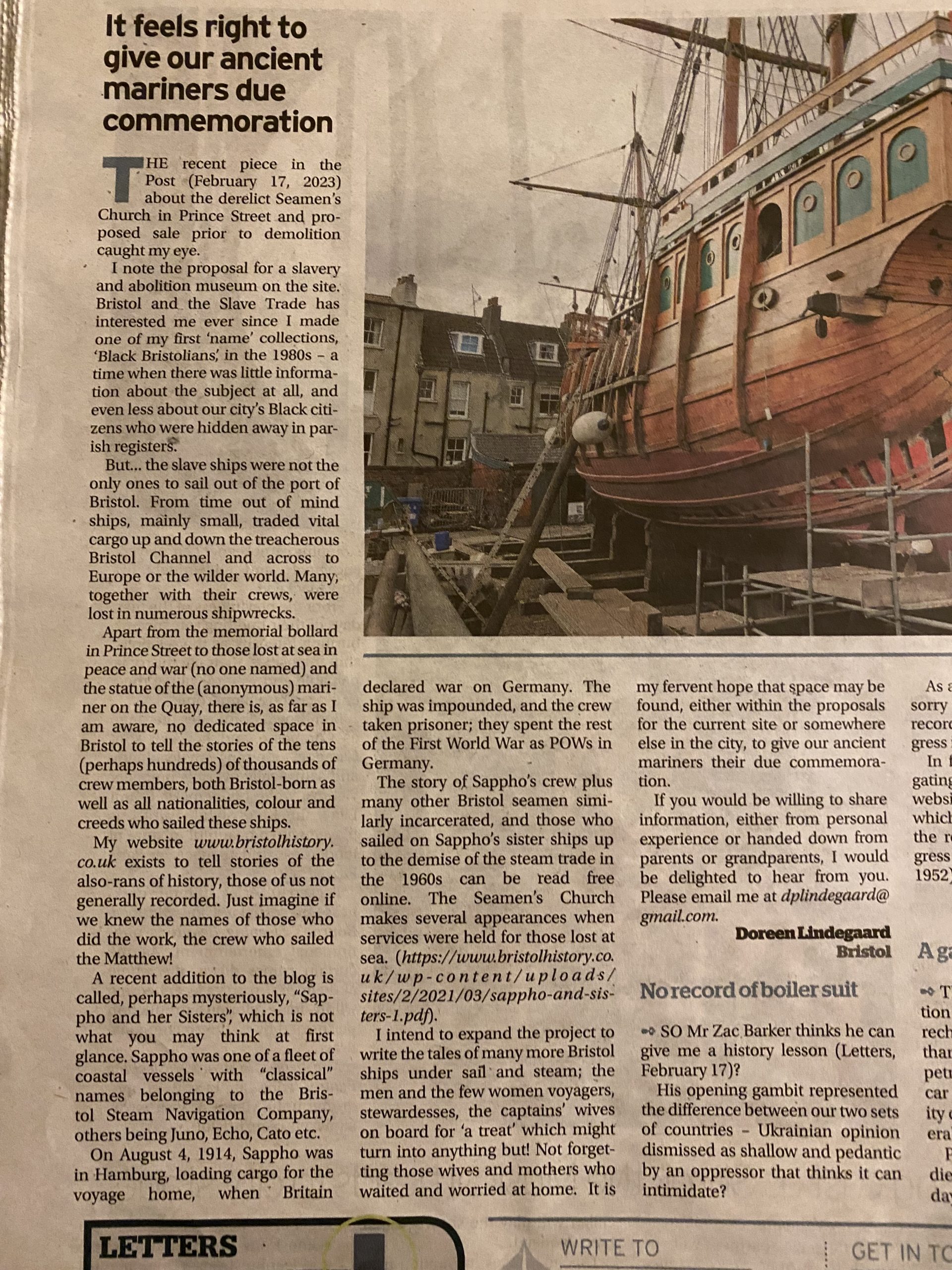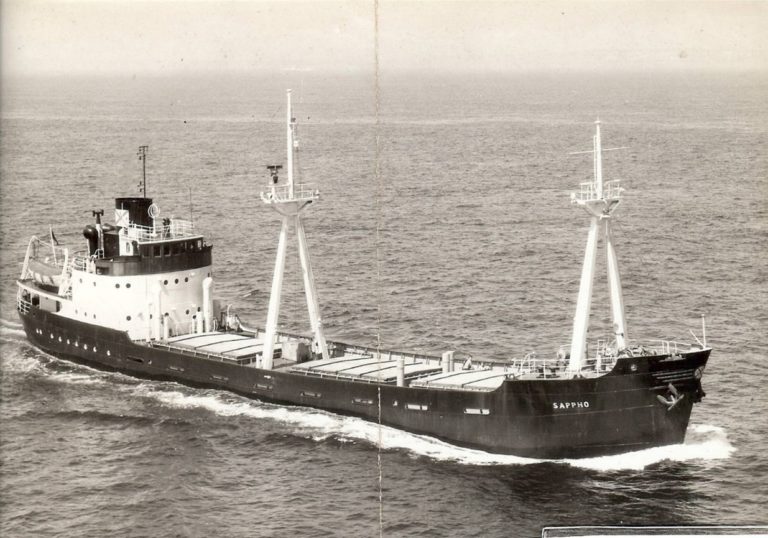
 I recently wrote to the Bristol Evening Post voicing my concern for the plans regarding the Seamen’s Church in Prince Street, Bristol.
I recently wrote to the Bristol Evening Post voicing my concern for the plans regarding the Seamen’s Church in Prince Street, Bristol.
The letter appeared on 2 March 2023
“The recent piece in the Post, 17 February 2023, about the derelict Seamen’s Church in Prince Street and proposed sale prior to demolition caught my eye. I note the proposal for a slavery and abolition museum on the site. Bristol and the Slave Trade has interested me ever since I made one of my first ‘name’ collections, ‘Black Bristolians’ in the 1980s, a time when there was little information about the subject at all, and even less about our city’s black citizens who were hidden away in parish registers.
“But…..the slave ships were not the only ones to sail out of the port of Bristol. From time out of mind ships, mainly small, traded vital cargo, up and down the treacherous Bristol Channel and across to Europe or the wilder world. Many, together with their crews, were lost in numerous shipwrecks. Apart from the memorial bollard in Prince Street to those lost at sea in peace and war (no-one named) and the statue of the (anonymous) mariner on the Quay, there is, as far as I am aware, no dedicated space in Bristol to tell the stories of the tens (perhaps hundreds) of thousands of crew members, both Bristol born as well as all nationalities, colour and creeds who sailed these ships.
“My website exists to tell stories of the also-rans of history, those of us not generally recorded. Just imagine if we knew the names of those who did the work, the crew who sailed the Matthew! A recent addition to the blog is called, perhaps mysteriously, “Sappho and her Sisters“, which is not what you may think at first glance. Sappho was one of a fleet of coastal vessels with “classical” names belonging to the Bristol Steam Navigation Company, others being Juno, Echo, Cato &c. On 4 August 1914 Sappho was in Hamburg, loading cargo for the voyage home, when Britain declared war on Germany. The ship was impounded, and the crew taken prisoner; they spent the rest of the First World War as POWs in Germany. The story of Sappho’s crew plus many other Bristol seamen similarly incarcerated, and those who sailed on Sappho‘s sister ships up to the demise of the steam trade in the 1960s can be read free online. The Seamen’s Church makes several appearances when services were held for those lost at sea.
 “I intend to expand the project to write the tales of many more Bristol ships under sail and steam; the men and the few women voyagers, stewardesses, the captain’s wives on board for ‘a treat’ which might turn into anything but! Not forgetting those wives and mothers who waited and worried at home. It is my fervent hope that space may be found, either within the proposals for the current site or somewhere else in the city, to give our ancient mariners their due commemoration.
“I intend to expand the project to write the tales of many more Bristol ships under sail and steam; the men and the few women voyagers, stewardesses, the captain’s wives on board for ‘a treat’ which might turn into anything but! Not forgetting those wives and mothers who waited and worried at home. It is my fervent hope that space may be found, either within the proposals for the current site or somewhere else in the city, to give our ancient mariners their due commemoration.
“If you would be willing to share information, either from personal experience or handed down from parents or grandparents, I would be delighted to hear from you, please email me.” dplindegaard@gmail.com
I am grateful to the Editor of the Letters Page in the Bristol Evening Post for publishing my letter. The result so far is my acquaintance with a wonderful nonagenarian seaman with total recall, of which more on the blog later!










Leave a Comment